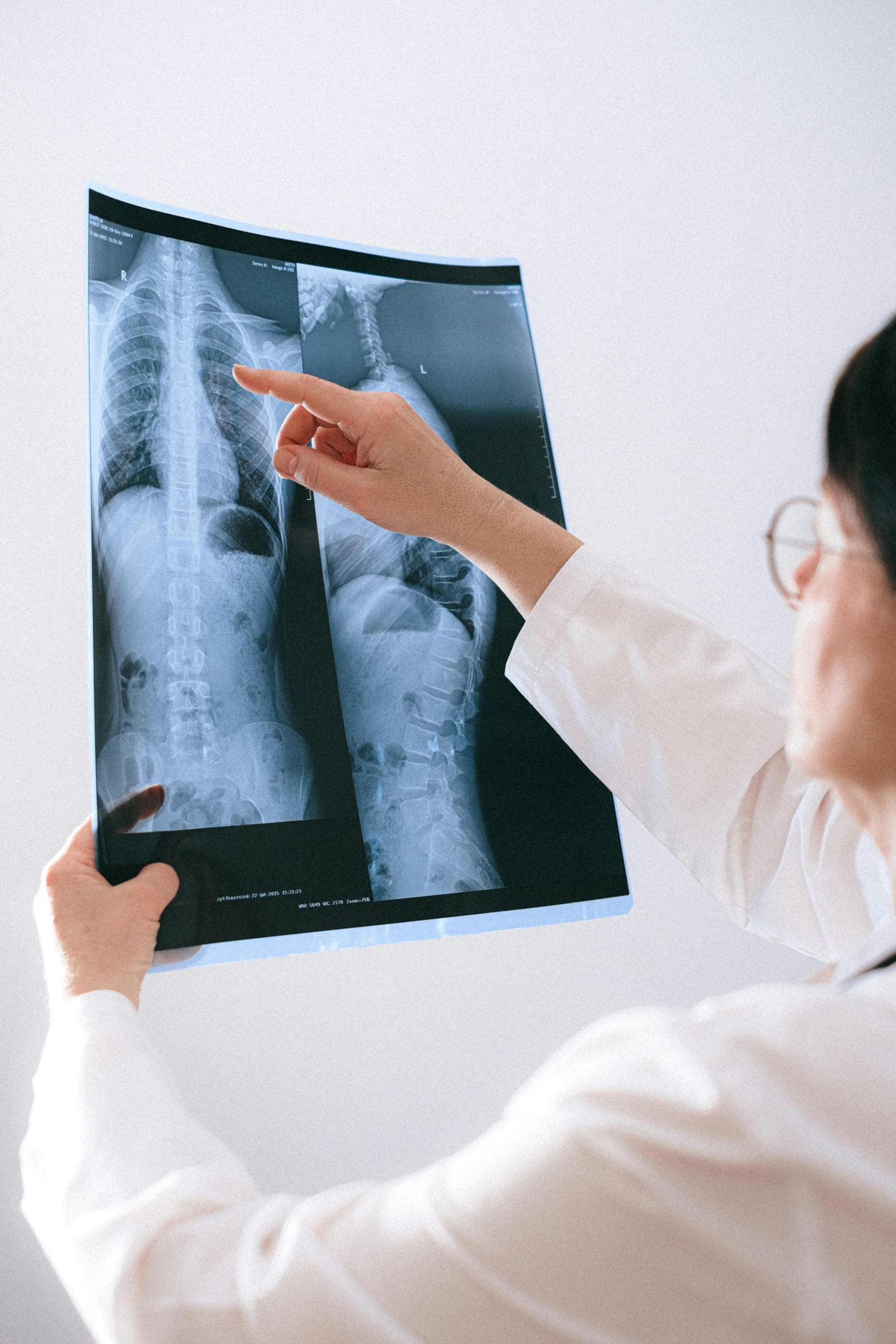
If you suffer from chronic back pain, you’ve probably tried multiple treatments to relieve your discomfort. For some people, traditional options may not bring enough relief, leaving them searching for alternatives. One effective, non-invasive approach that offers promising results is spinal decompression therapy. But what exactly is spinal decompression, and how does it work to relieve pain? Here, we’ll explain spinal decompression therapy, how it works, common conditions it can treat, and the benefits it can provide.
Understanding Spinal Decompression Therapy
Spinal decompression procedure therapy is a type of treatment specifically designed to relieve pressure on the spine. It’s a non-invasive option that aims to create space between the vertebrae in your spine, taking pressure off compressed nerves, spinal disks, and the spinal cord itself. This therapy is often sought out by individuals suffering from chronic back pain, herniated or bulging discs, sciatica, and other conditions affecting spinal health.
Spinal decompression can be divided into two types: nonsurgical spinal decompression and surgical spinal decompression. Both methods focus on reducing pressure in the spinal column to relieve symptoms of pain and discomfort. For those looking to avoid invasive procedures, non-surgical spinal decompression offers an attractive alternative.
Surgical vs. Nonsurgical Spinal Decompression
While surgical spinal decompression, also known as spinal decompression surgery, can be effective for severe cases, it’s often reserved for patients with more extreme spinal conditions or who haven’t responded to other treatments. Non-surgical spinal decompression—typically done through decompression therapy on a specialized table—is a preferred method for those looking to avoid surgery and is widely effective for reducing pain and restoring mobility.
How Spinal Decompression Works to Relieve Pressure
The purpose of spinal decompression therapy is to gently stretch the spine, creating negative pressure within the spinal column. This decompression process aims to alleviate pressure on spinal discs and compressed nerves, providing much-needed pain relief. But how exactly does it work?
During a session of spinal decompression therapy, a patient is positioned on a specially designed table, often referred to as a spinal traction table. The table uses mechanical traction to gently stretch the spine, creating space between the vertebrae and relieving pressure on herniated disks, degenerative disk disease, and spinal stenosis. The process of creating negative pressure encourages the realignment of herniated discs and promotes tissue repair, allowing nutrients, oxygen, and blood to flow to the affected areas. This enhanced blood flow not only reduces pressure but also helps in reducing pain and promoting an optimal healing environment.
Creating Negative Pressure: How It Benefits the Spine
One of the primary benefits of spinal decompression is that it creates negative pressure within the spinal column. When pressure is reduced, this negative pressure encourages bulging or herniated disks to retract, pulling back away from nearby nerves. This relieves symptoms associated with compressed nerves, such as sciatic nerve pain, leg pain, and neck pain. In addition to creating more space, spinal decompression can help restore function to the lumbar spine and spinal joints.
This form of therapy is particularly helpful for people who have conditions causing chronic pain or worsening symptoms due to ongoing compression. Spinal decompression work also helps relieve symptoms caused by pressure on the spinal cord, supporting long-term spinal health.
Common Conditions Treated with Spinal Decompression Therapy
Spinal decompression therapy can treat a wide range of spinal conditions. Patients with conditions like herniated or bulging discs, degenerative disk disease, and spinal stenosis often experience significant relief. Here’s a closer look at some common conditions that can be treated:
1. Herniated and Bulging Discs
When the soft tissue between your spinal bones (vertebral discs) becomes compressed, it may bulge out or even rupture, leading to a herniated disc. This can press on surrounding nerves, causing intense pain and associated symptoms. By creating space through spinal decompression, herniated or bulging discs can retract, reducing the pressure on nerves and providing pain relief.
2. Degenerative Disk Disease
With age, the spinal disks naturally lose hydration and flexibility, leading to degenerative disk disease. This condition causes chronic back pain and stiffness, especially in the lower back. Spinal decompression works to relieve pressure on the spinal disks and nearby nerves, making it an effective treatment for degenerative disk disease.
3. Spinal Stenosis
Spinal stenosis occurs when the spinal canal narrows, putting pressure on the spinal cord and nerves. This condition often causes severe pain, numbness, and tingling in the back, neck, or legs. Spinal decompression therapy helps relieve pressure in the spinal canal, which can significantly reduce these symptoms and improve mobility.
4. Sciatica
Sciatica occurs when the sciatic nerve is compressed, often due to a herniated disc or spinal stenosis. This results in shooting pain down the leg, numbness, and tingling. Decompression therapy can be an effective treatment for sciatic nerve pain by relieving pressure on the affected nerve.
5. Neck Pain and Associated Symptoms
Many patients suffering from chronic neck pain find relief through spinal decompression. By reducing pressure in the cervical spine, decompression therapy can alleviate pain and related symptoms like headaches and tingling in the arms.

Benefits of Spinal Decompression Therapy
There are numerous benefits of spinal decompression for those suffering from back pain and other spinal issues. Some of the most notable advantages include:
- Non-invasive Treatment: Nonsurgical spinal decompression is a non-invasive option, allowing patients to avoid more invasive procedures.
- Pain Relief and Mobility: This therapy can relieve symptoms of chronic back pain and improve range of motion without surgical intervention.
- Promote Healing and Tissue Repair: The therapy supports natural tissue repair by increasing blood flow to the damaged area, which promotes healing.
- Reduced Pressure on Nerves: By creating space between vertebrae, spinal decompression relieves pressure on compressed nerves and reduces pain.
- Improved Circulation: Enhanced blood flow to the spinal area can reduce inflammation and promote quicker recovery.
This method is beneficial for many patients who want a non-surgical approach to pain management, especially those dealing with conditions that require multiple sessions of therapy for optimal healing.
What to Expect During Spinal Decompression Treatment
During your initial spinal decompression treatment session, your chiropractor will evaluate your specific condition and customize the treatment to target your problem areas. The session itself typically lasts about 30-45 minutes, and most patients find it to be a comfortable experience. Some patients may require additional physical therapy and massage therapy alongside spinal decompression to maximize benefits.
The process involves being gently secured on a specialized decompression table where targeted traction is applied to your spine. Each session may feel slightly different based on your needs, but most patients report a gentle stretching sensation that’s relaxing rather than painful. Over time, this decompression procedure can have long-term benefits by alleviating pressure and providing relief from severe pain.
Recovery Period and Post-Treatment Care
After undergoing spinal decompression, most patients can resume regular activities shortly after treatment. However, adhering to any post-treatment guidelines provided by your chiropractor can be essential in ensuring optimal results. Patients with chronic conditions may require regular sessions, but those with minor issues might experience significant relief in just a few visits. Chiropractors often recommend specific exercises and stretches to maintain spinal health and prevent future issues.
How Spinal Decompression Differs from Other Treatments
Compared to other treatment options like inversion therapy or more invasive spinal surgeries, spinal decompression therapy provides a unique approach to reducing pain without surgical risks. Unlike surgery, this therapy requires no downtime, doesn’t involve long recovery periods, and avoids the risks associated with blood clots and infections often linked to invasive spinal procedures.
Other alternative treatments like spinal injections or chiropractic adjustments can provide temporary relief but may not address the underlying issue as effectively as decompression therapy. In addition, decompression therapy directly targets the spinal condition and promotes healing without causing additional strain on the spinal column.
Is Spinal Decompression Right for You?
For those with chronic back pain, neck pain, or associated symptoms, spinal decompression could be an effective solution. Many patients who are hesitant about spinal surgery find that non-surgical decompression therapy offers the relief they need without the risks associated with surgical intervention. However, it’s essential to consult a qualified chiropractor to determine if decompression therapy is suitable for your unique condition.
In general, decompression therapy is beneficial for individuals with conditions such as degenerative disk disease, herniated discs, or sciatica. If you’re struggling with back pain or related symptoms, consider discussing spinal decompression with a chiropractor to explore whether this non-invasive treatment could bring you relief.
Take the First Step to Relieve Your Back Pain
If you’re tired of dealing with persistent back pain, spinal decompression therapy may be the right solution for you. With a thorough assessment, your chiropractor can determine whether decompression therapy will help you alleviate pressure, promote healing, and regain your quality of life. Contact ProCare Oviedo Chiropractors to learn more about spinal decompression and to schedule a consultation today.
You don’t have to live with chronic pain—



